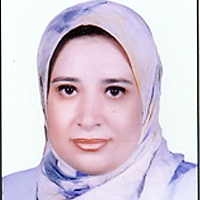Tumours of the Uterine Corpus: A Histopathological and Prognostic Evaluation Preliminary of 429 Patients
Published on: 30th January, 2017
OCLC Number/Unique Identifier: 7286353787
A histopathological review preliminary of 429 patients diagnosed with tumours of the uterine corpus (TUC) cancer between 1984- 2010 in the Vigo University Hospital Complex (Spain) were evaluated prospectively for over 5 years. Of these 403 (93.9%) were epithelial tumours: 355 (82.7%) were adenocarcinomas of the endometrioid type, 5 (1.1%) mucinous adenocarcinoma, 10 (2.3%) serous adenocarcinoma, 17 (3.9%) clear cell carcinomas, 11 (2.5%) mixed adenocarcinoma, 4 (0.9%) undifferentiated carcinomas and 1 (0.2%) squamous cell carcinomas. A total 20 (4, 6%) were mesenchymal tumours: 4 (0.9%) endometrial stromal sarcoma, 7 (1.6%) Leiomyosarcoma, 9 (2%) Mixed endometrial stromal and smooth muscle tumour. A total 1 (0.2%) were mixed epithelial and mesenchymal tumours: (0.2%) Adenosarcoma 1. And 5 (1.1%) were Metastases from extragenital primary tumour (3 carcinomas of the breast, 1 stomach and 1 colon). The mean age at diagnosis from total series were 65, 4 years (range 28-101 years). Age was clearly related to histologic type: Endometrial stromal sarcoma 46.0 years, Leiomyosarcomas 57.1 years, Adenocarcinomas of the endometrioid type 65.4 years, Clear cell carcinomas 70.1 years and mixed endometrial stromal and smooth muscle tumours 71.2 years. Five-year disease-free survival rates for the entire group were: Endometrial stromal sarcoma 50%, Leiomyosarcomas 28.6%, Adenocarcinomas of the endometrioid type 83.7%, Clear cell carcinomas 64.7% and mixed endometrial stromal and smooth muscle tumours 44.4%. The 5-year disease-free survival rates of patients with Adenocarcinomas of the endometrioid type tumors were 91.4% for grade 1 tumors, 77.5% for grade 2, and 72.7% for grade 3.
In conclusion, we describe 5-year histological and disease-free survival data from a series of 429 patients with TUC, observing similar percentages to those described in the medical literature. The only difference we find with other published series is a slightly lower percentage of serous carcinomas (ESC) that the Western countries but similar to the 3% of all ESC in Japan. Our investigation is focus at the moment on construct genealogical trees for the possible identification of hereditary syndromes and to carry out germline mutation analysis.
Leiomyosarcoma of Maxillary Sinus – A Rare Clinical Entity
Published on: 17th July, 2018
OCLC Number/Unique Identifier: 7795968675
Leiomyosarcoma is a malignant smooth-muscle tumor that has a predilection for the gastrointestinal and female genital tract and is a rare entity in the paranasal sinuses. It is locally fast-spreading and highly aggressive, and the prognosis is poor. We report a rare case of leiomyosarcoma of the maxilla in a patient who sought treatment for maxillary swelling, nasal obstruction with no epistaxis, orbital involvement or cervical lymph node metastasis. The patient underwent total maxillectomy followed by radiotherapy. At present after 5 years of follow up, he is symptom free with no recurrence.
Leiomyosarcoma in pregnancy: Incidental finding during routine caesarean section
Published on: 16th August, 2021
OCLC Number/Unique Identifier: 9272401197
Uterine leiomyosarcoma (LMS) is uncommon tumour arising from the female reproductive tract. Incidence of LMS in pregnancy is extremely rare, with only 10 cases reported thus far in medical literature.We present a case of myomectomy performed during elective caesarean section for breech presentation, due to its easy accessibility and well contracted uterus. Subsequent histology revealed LMS on final specimen. Patient subsequently underwent total abdominal hysterectomy, bilateral salpingo-oophorectomy. No chemotherapy was given as she opted for close clinical- radiological monitoring instead. This case report highlights the importance of discussion with patients regarding the risk of occult malignancy in a fibroid uterus. Appropriate management of uterine leiomyosarcoma in pregnancy remains unclear. Consideration of removing an enlarging leiomyoma during caesarean section might be ideal in view of its malignant potential, just like in this case; however, location of the tumour and risk of bleeding needs to be weighed. Ultimately, management of such cases needs proper discussion between obstetrician and the patient.




